Part of a series of articles titled Park Paleontology News - Vol. 14, No. 2, Fall 2022.
Article
Centennial Commemoration for the Creation of Fossil Cycad National Monument

Vincent L. Santucci, Paleontologist
NPS Geologic Resources Division
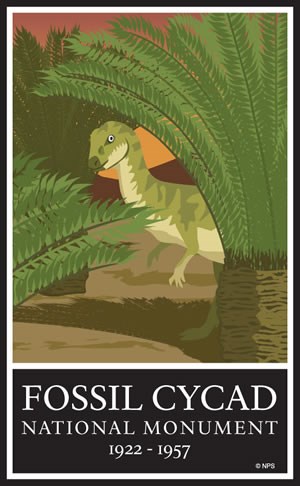
Introduction
The National Park System administers a sometimes-confusing array of designated areas including national parks, monuments, preserves, historic sites, battlefields, military parks, recreation areas, seashores, lakeshores, rivers, parkways, trails, and more. There is a small list of park areas which share a different type of designation, referred to as either “abolished” or “deauthorized”, where the area was officially transferred from the administration of the National Park System. For a list of abolished National Park System areas visit this website: NPS Archeology Program: About the Antiquities Act.
Illustration (right): Graphic art depicting a small dinosaur Hysilophodon wielandi among Cretaceous cycads. The dinosaur is named in recognition of Yale paleobotanist George Wieland who studied the South Dakota fossil cycadeoids and was one of the strongest advocates for establishing Fossil Cycad National Monument.
NPS image.
Creation of Fossil Cycad National Monument
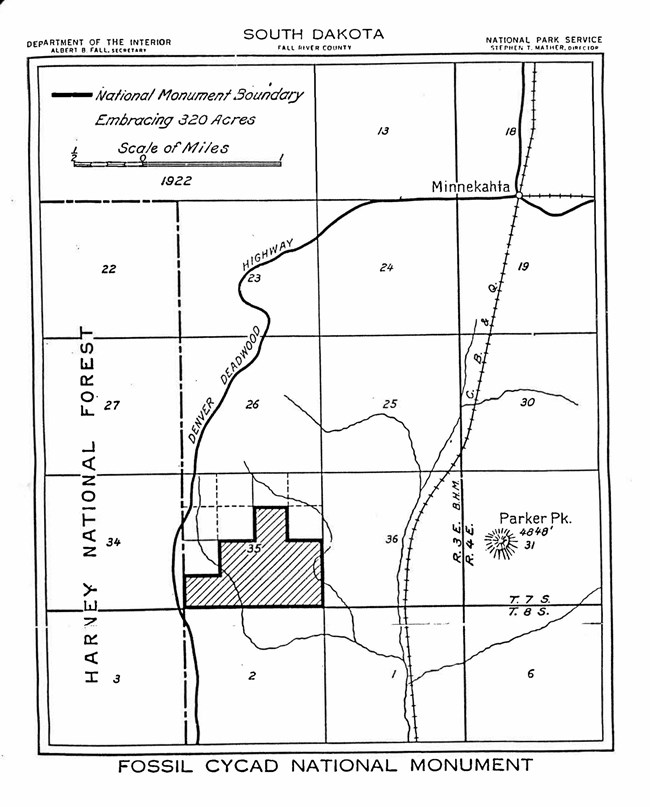
NPS image.
October 21, 2022 will mark the 100th anniversary of the establishment of the now-abolished Fossil Cycad National Monument, which was located west of Hot Springs, South Dakota, in the southern Black Hills. The monument and surrounding area were originally recognized during the late 19th century as an important source of Cretaceous fossil plants known as cycadeoids, which resemble big pineapples. (At the time the monument was proclaimed, cycadeoids were thought to be true cycads, hence the similar names and the name of the monument but are now known to be distinct.) This important fossil locality preserved one of Earth’s greatest concentrations of fossilized cycadeoid specimens, and collections from the areas were made by paleobotanists from the Smithsonian, Yale University, and other institutions. The scientific significance of this fossil plant locality, along with excitement about the creation of Dinosaur National Monument a few years earlier, led to the proposal to establish a portion of the fossil cycad locality as a national monument through the authority within the Antiquities Act (1906). On October 21, 1922, Fossil Cycad National Monument was proclaimed as a unit of the National Park Service by President Warren G. Harding.
Geoheritage Value—Scientific Significance
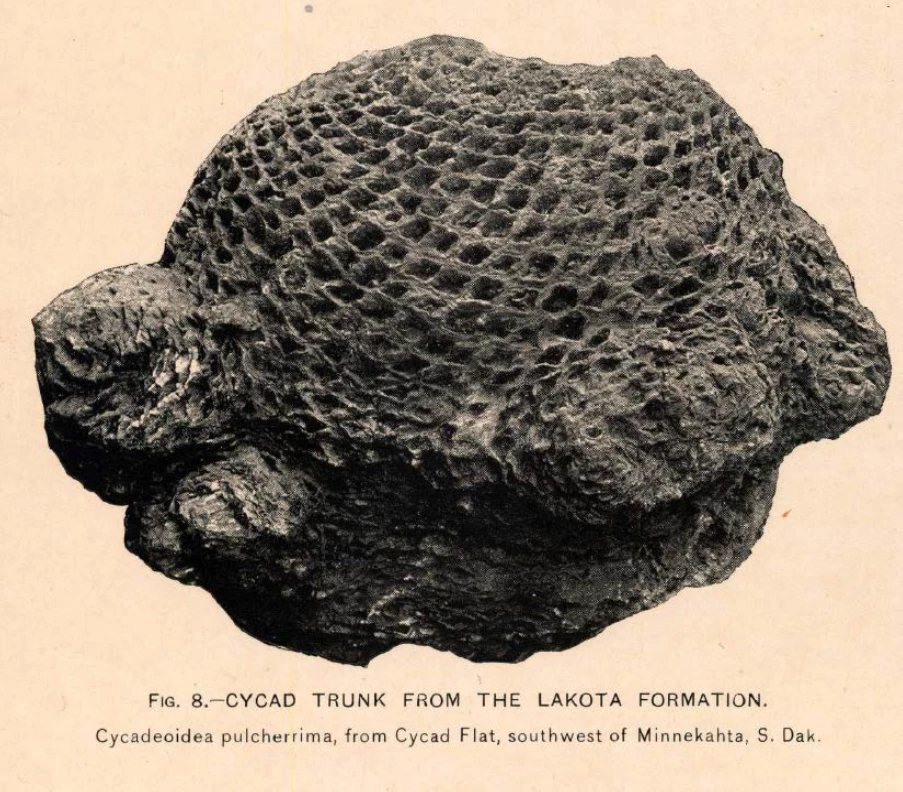
Illustration from Darton, N. H., and W. S. T. Smith. 1904. Edgemont folio, South Dakota-Nebraska. U.S. Geological Survey, Washington, D.C. Geologic atlas of the Unites States. Folio 108.
The scientific importance of the fossils associated with Fossil Cycad National Monument is based upon the rich diversity and exceptionally well-preserved fossil cycadeoids collected from this locality. Research and scientific publications documenting these collections resulted in the identification, description, and naming of nineteen new species of cycadeoids. The study of the fossil cycadeoids and the preservation of the fossil locality became the focus of Yale University paleobotanist George Wieland’s life work. Wieland worked tirelessly to promote the preservation of the important fossil plant locality as a national monument.
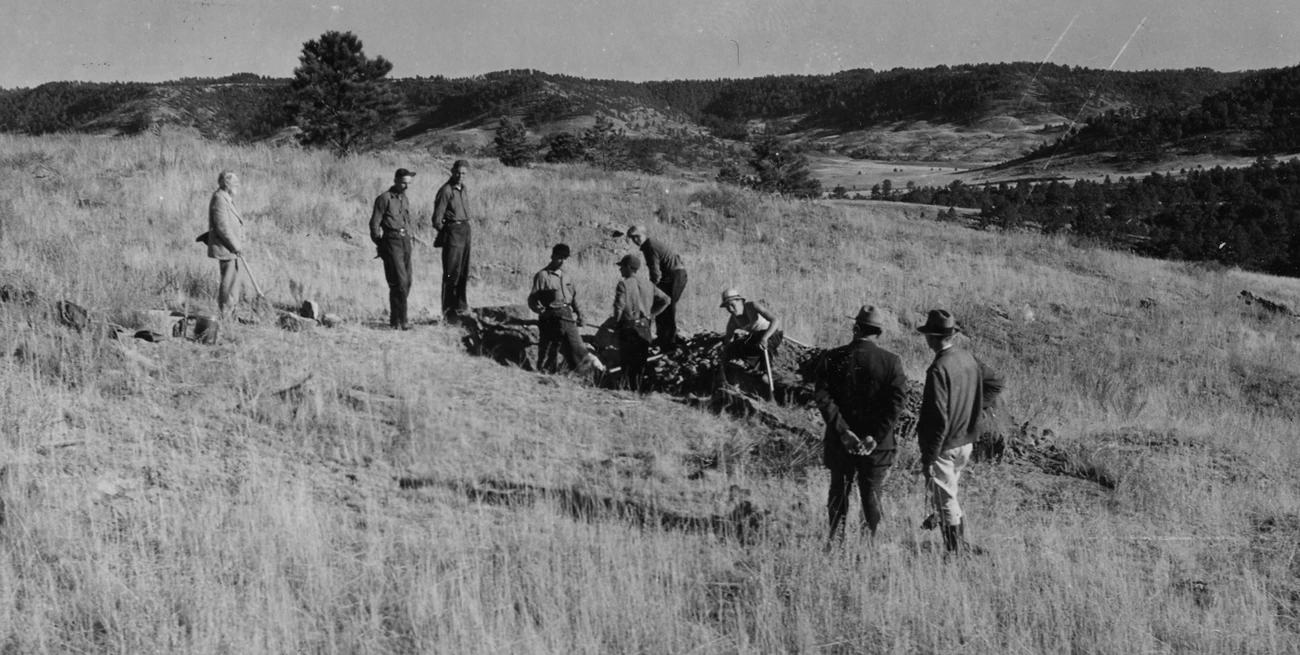
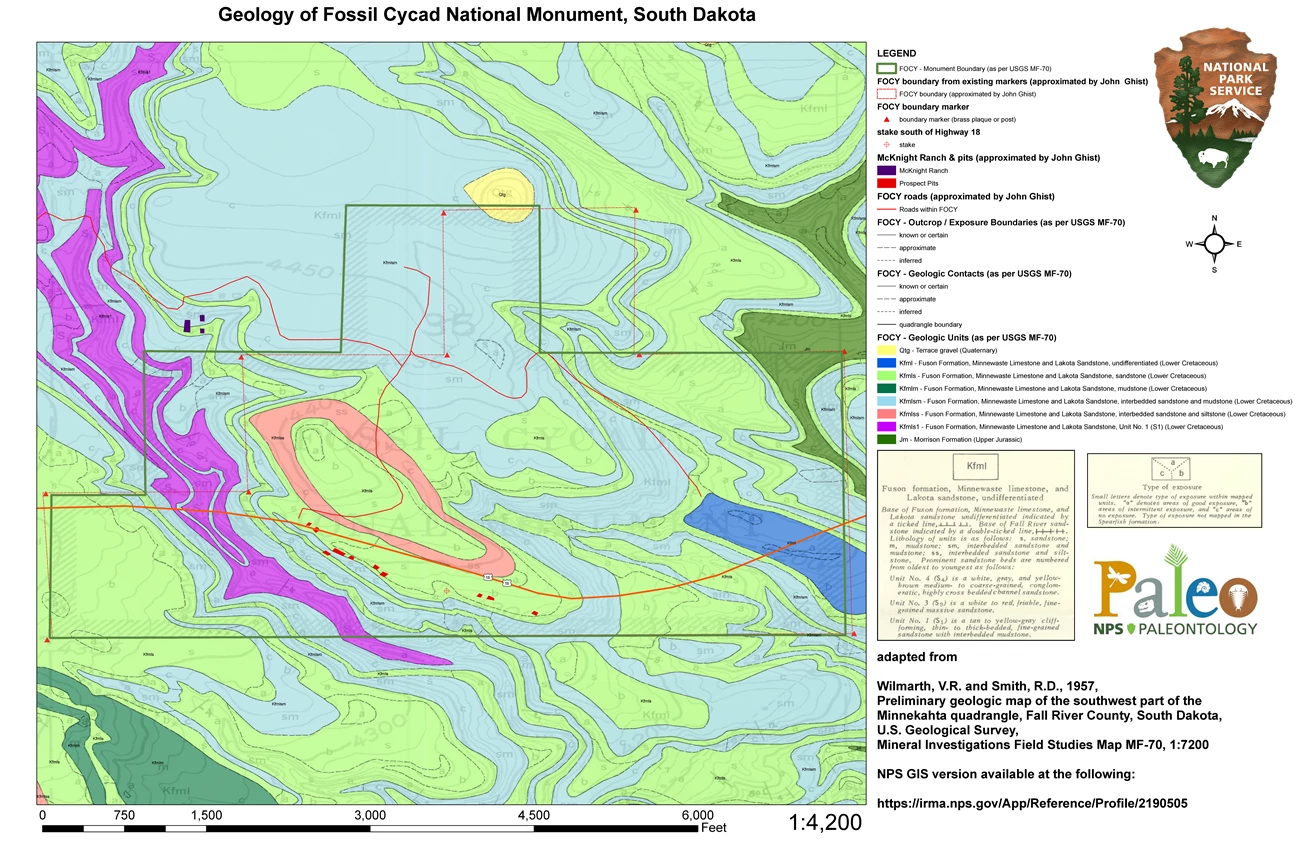
NPS image.
National Monument Years
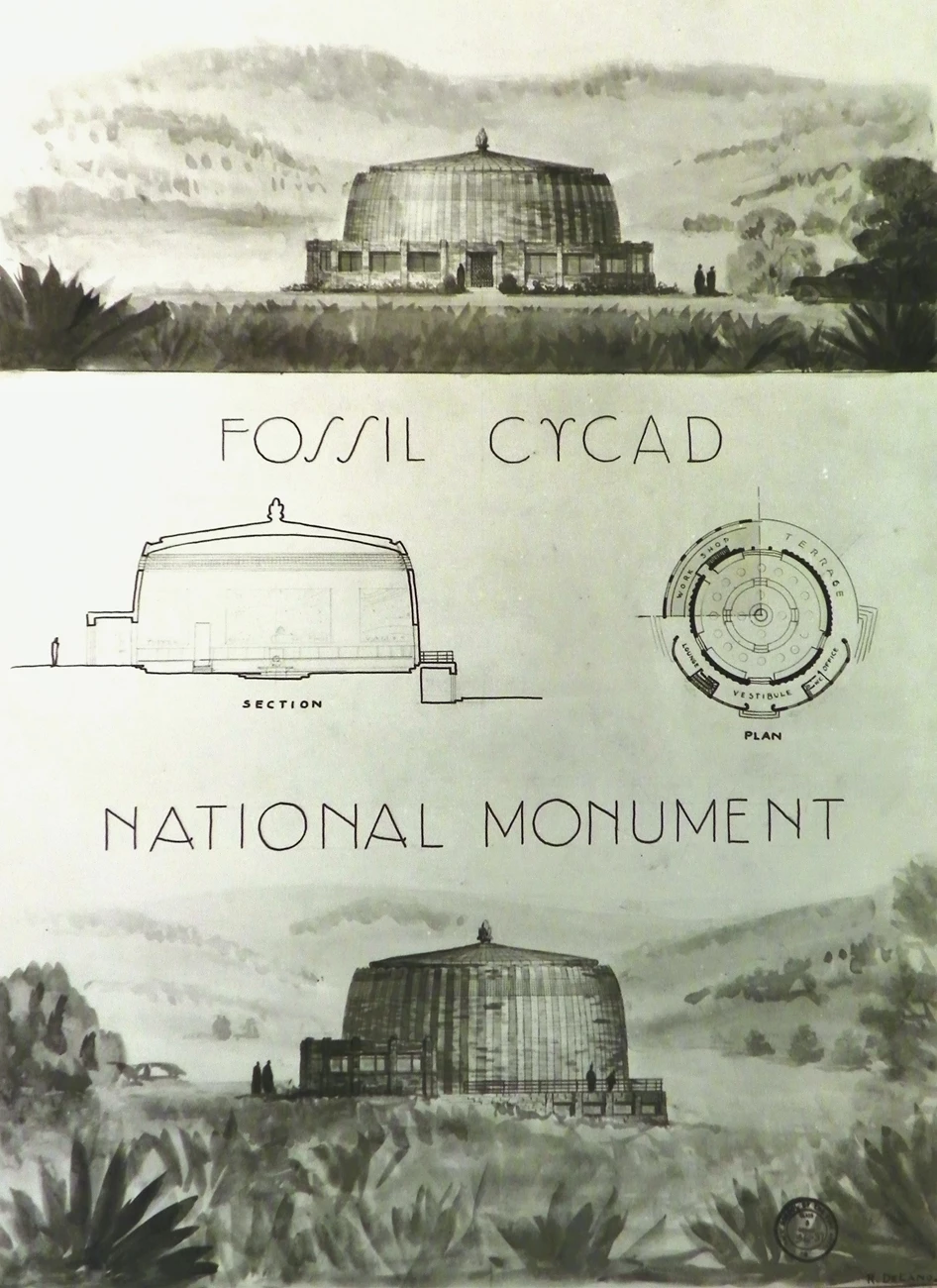
NPS image.
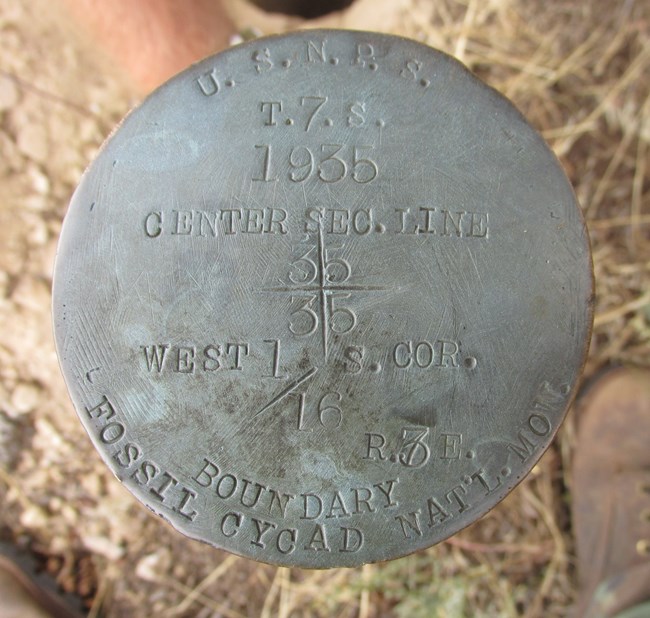
NPS photo.
For approximately thirty-five years Fossil Cycad National Monument was a unit of the National Park System. However, due to other priorities and the onset of the Great Depression, the monument did not receive funding to develop facilities or hire dedicated staff. The monument was placed under the superintendent at Wind Cave National Park, but there was not a regular on-site National Park Service (NPS) presence at the monument.
Through some unfortunate decisions, the over-collection of fossil cycads at the surface of the monument led to an almost entire depletion of these namesake fossils. Attempts to determine whether any fossil cycads were present beneath the surface led the NPS to coordinate a test excavation at the monument in 1935 with the support of Yale Paleobotanist George Wieland and a small team from the Civilian Conservation Corps. Although fossil cycads were located beneath the surface, various factors including the onset of World War II redirected attention away from the monument for many years.
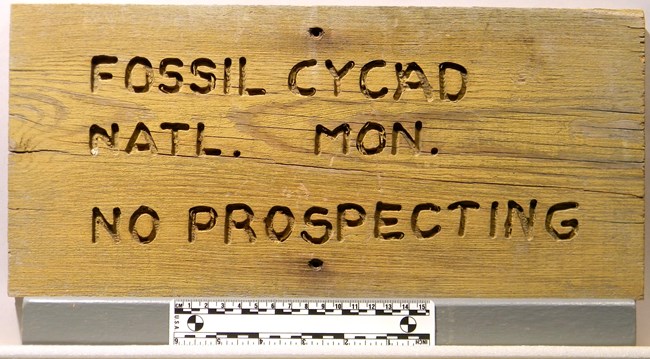
NPS photo.
By the 1950s the original advocates for the monument had passed away and there was little interest within the NPS for a monument that seemingly did not have the resource for which it was named. At the same time, the post-war interests in uranium minerals led to pressure for the Department of Interior to expand opportunities for mining claims and the monument was a potential area of interest. On September 1, 1957, in a rarely undertaken legislative action, Congress voted to abolish Fossil Cycad National Monument as a unit of the NPS and transfer the administration and care of the lands to the Bureau of Land Management.
Lessons Learned
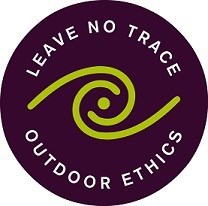
There are clear lessons to be learned from the history of Fossil Cycad National Monument pertaining to the management of non-renewable paleontological resources. Many paleontological sites are vunerable to damage from careless visitation and over-use.
Leave No Trace—Protect Fossils for Science
Be sure to practice Leave No Trace princples whenever you are in the outdoors. Of particular importance at fossil sites is to:
-
Travel and camp on durable surfaces, and
-
Leave what you find.
If you see signs of vandalism or someone acting inappropriately during your visit to a park site, please contact a ranger at the park or make a report through NPS Investigative Services.
Reference
For more information about the history of the abolished monument, see the article shared in the reference linked below.
- Santucci, V.L. and J.M. Ghist, 2014. Fossil Cycad National Monument: A History From Discovery to Deauthorization. Proceedings of the 10th Conference on Fossil Resources. Dakoterra 6: 82-93.
https://irma.nps.gov/DataStore/Reference/Profile/2274104
Last updated: December 1, 2022
